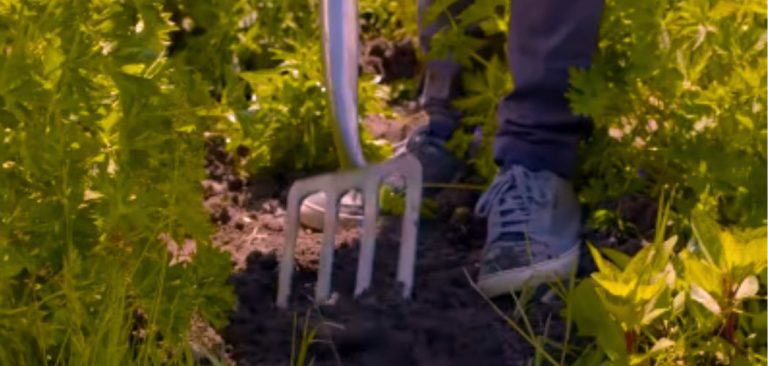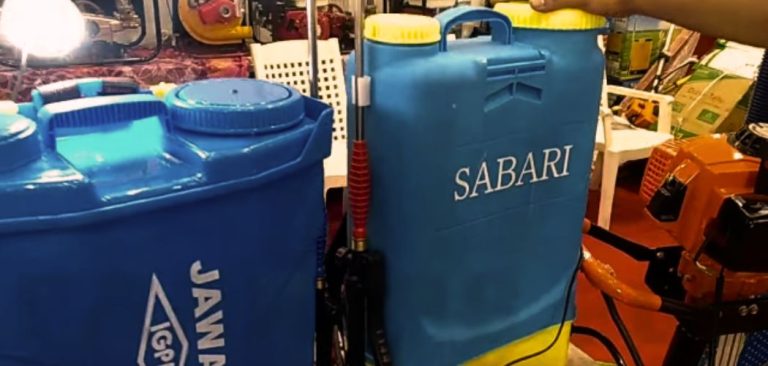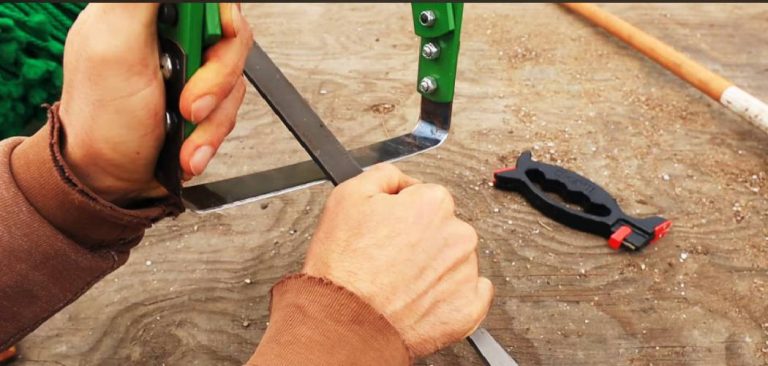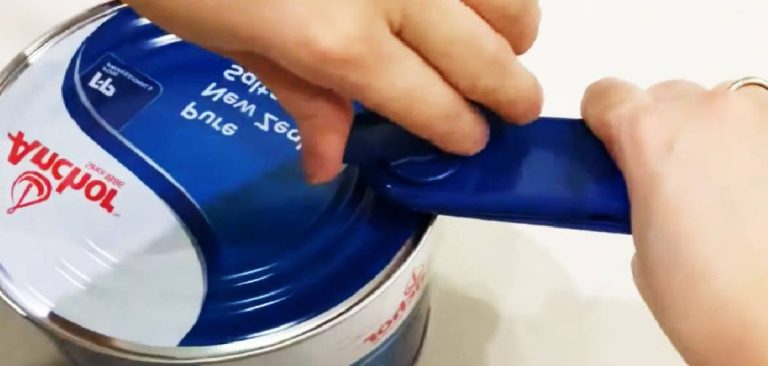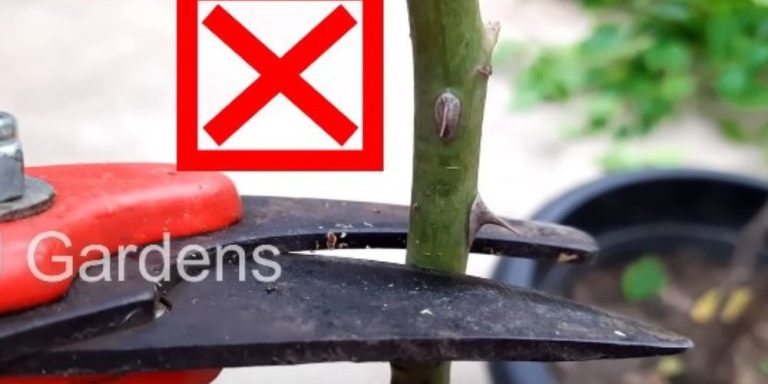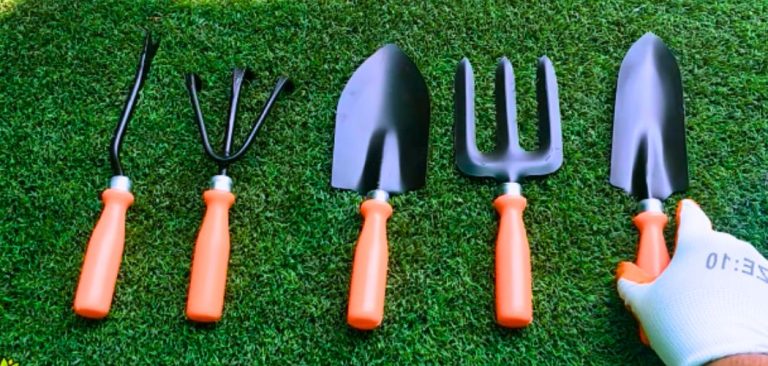Types of Garden Forks: A Comprehensive Guide to Choosing the Right One for Your Garden
Garden forks are essential tools for any gardener. They come in different types, each with its unique features and benefits. Choosing the right garden fork can make a significant difference in the success of a garden. This article will explore the different types of garden forks and their uses.
The first type of garden fork is the digging fork. This fork has four sturdy tines that are designed to penetrate deep into the soil. Digging forks are ideal for loosening compacted soil, breaking up clods, and digging up root vegetables.
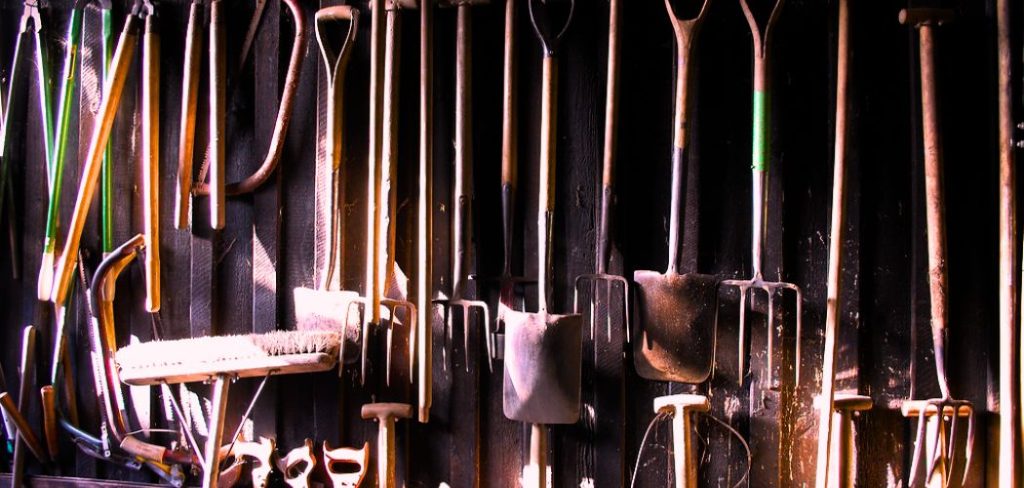
They are also useful for turning compost piles and aerating lawns. Gardeners who frequently work with heavy soil or have large gardens will benefit from using a digging fork.
The second type of garden fork is the border fork. Border forks are smaller and lighter than digging forks, making them ideal for working in tight spaces. They have shorter handles and narrower tines, which make them perfect for working around plants in flower beds and vegetable gardens.
Border forks are also useful for lifting and moving small plants and shrubs. Gardeners who have small gardens or work in confined spaces will find a border fork to be a valuable tool.
Understanding Garden Forks
Garden forks are an essential tool for any gardener, whether you’re a professional landscaper or a weekend hobbyist. They come in a variety of shapes, sizes, and materials, each designed for specific tasks in the garden.
Types of Garden Forks
Here are some of the most common types of garden forks and their uses:
Digging Forks
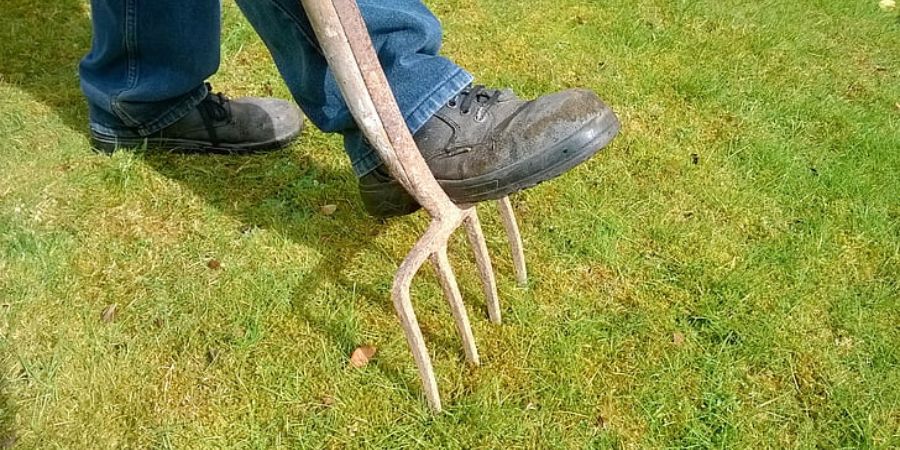
Digging forks are the most common type of garden fork. They have four or five tines and are designed for digging and turning soil, as well as lifting and moving compost and other organic matter. The tines are usually pointed and slightly curved, making it easier to penetrate the soil.
Border Forks
Border forks are smaller and lighter than digging forks, with shorter handles and narrower tines. They are designed for working in tight spaces, such as between plants or in raised beds. Border forks are also useful for lifting and moving small amounts of soil or compost.
Manure Forks
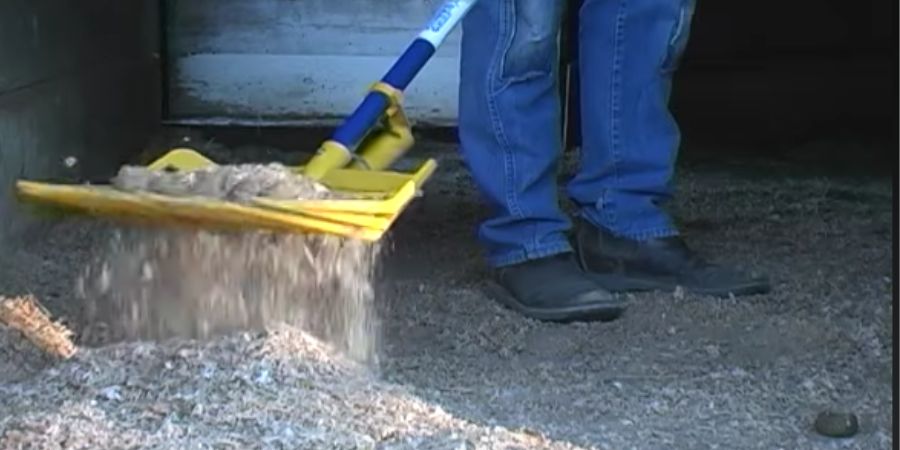
Manure forks, also known as pitchforks, have four or more long, curved tines that are spaced widely apart. They are designed for moving large amounts of bulky material, such as manure, hay, or straw. The tines are usually blunt and flat, making it easier to scoop up and carry heavy loads.
Potato Forks
Potato forks, also known as pronged forks, have four or five straight, pointed tines that are closely spaced together. They are designed for digging up root vegetables, such as potatoes, carrots, and beets, without damaging them. The close spacing of the tines allows the fork to penetrate the soil more easily and with less resistance.
Materials
Garden forks can be made from a variety of materials, each with its own advantages and disadvantages.
Steel
Steel forks are the most common and durable. They are strong and can withstand heavy use, but they are also heavy and can be difficult to maneuver.
Stainless Steel
Stainless steel forks are rust-resistant and easy to clean, making them ideal for use in wet or humid conditions. They are also lightweight and easy to handle, but they can be more expensive than other materials.
Aluminum
Aluminum forks are lightweight and easy to handle, but they are not as strong as steel forks and can bend or break under heavy use.
Plastic
Plastic forks are lightweight and inexpensive, but they are not as durable as metal forks and can break or crack over time.
Understanding the different types of garden forks and their uses can help you choose the right tool for the job. Whether you’re digging up soil, moving compost, or harvesting vegetables, there is a garden fork that is perfect for your needs.
Hand Forks
Hand forks are an essential tool for any gardener. They are perfect for loosening soil, removing weeds, and digging up small plants. Hand forks are also ideal for planting and transplanting small seedlings. There are different types of hand forks available in the market, each designed for specific gardening tasks.
Digging Hand Forks
Digging hand forks are designed for digging soil and breaking up clumps. They have sharp tines that are strong enough to penetrate through hard soil. They are ideal for digging holes for planting bulbs, small plants, and seedlings. Digging hand forks are also useful for removing stones and debris from the soil.
Weeding Hand Forks
Weeding hand forks are designed for removing weeds from the soil. They have sharp tines that can easily penetrate through the soil and remove weeds from their roots. Weeding hand forks are perfect for removing weeds from tight spaces, such as between plants, in raised beds, and in containers. They are also ideal for removing weeds from lawns.
Composting Hand Forks
Composting hand forks are designed for turning compost and breaking up clumps. They have wide tines that are perfect for mixing and turning compost. Composting hand forks are also useful for breaking up clumps of soil and removing debris from the compost pile. They are ideal for gardeners who want to create their own compost.
Hand forks are available in different sizes and materials. The most common materials used for hand forks are stainless steel and carbon steel. Stainless steel hand forks are rust-resistant and durable, while carbon steel hand forks are strong and affordable.
In conclusion, hand forks are a versatile tool that every gardener should have in their arsenal. They are perfect for a wide range of gardening tasks, such as digging, weeding, and composting. When choosing a hand fork, consider the type of gardening task you will be using it for and the material of the fork. With the right hand fork, gardening can be a breeze.
Border Forks
Border forks are a smaller and lighter type of garden fork that is ideal for working in tight spaces and borders. They are designed to be used for tasks such as planting, weeding, and cultivating in areas where a larger fork would be too cumbersome. There are two main types of border forks: traditional and ergonomic.
Traditional Border Forks
Traditional border forks are typically made from steel and have a wooden handle. They are a classic design that has been used for generations and are still popular today. The tines of the fork are usually curved and pointed, which makes them ideal for digging into soil and breaking up clumps. The wooden handle is comfortable to grip and provides a good amount of leverage when using the fork.
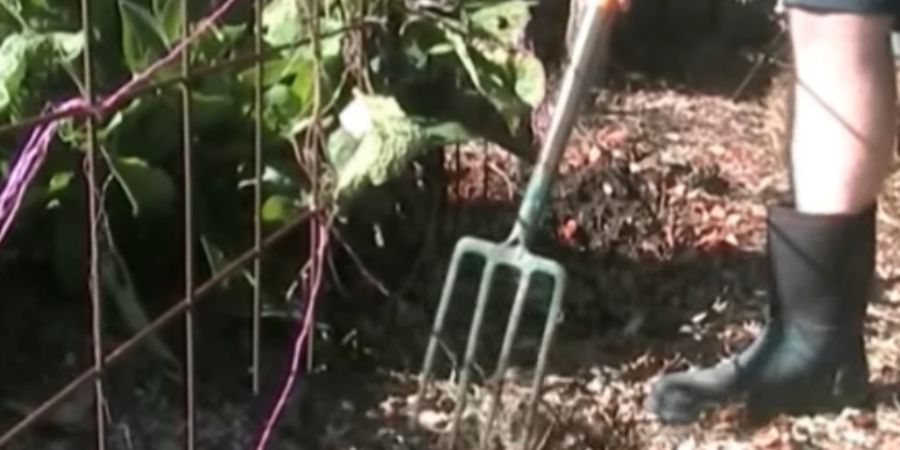
One of the main advantages of traditional border forks is their durability. They are built to last and can withstand heavy use without breaking or bending. They are also relatively inexpensive, which makes them a good choice for gardeners on a budget.
Ergonomic Border Forks
Ergonomic border forks are a more modern design that is intended to be more comfortable to use. They typically have a lightweight aluminum or composite handle that is designed to reduce strain on the hands and wrists. The tines of the fork are usually wider and flatter than those of traditional forks, which allows them to penetrate soil more easily.
One of the main advantages of ergonomic border forks is their comfort. They are designed to be used for extended periods of time without causing strain or discomfort. They are also lightweight and easy to maneuver, which makes them a good choice for gardeners who have limited strength or mobility.
Overall, both traditional and ergonomic border forks have their advantages and disadvantages. Traditional forks are durable and affordable, while ergonomic forks are more comfortable to use. Gardeners should choose the type of fork that best suits their needs and preferences.
Digging Forks
Digging forks are a type of garden fork that is designed to help gardeners dig into the soil with ease. They are an essential tool for any gardener who wants to prepare the soil for planting, aerate the soil, or remove weeds. There are two types of digging forks: standard digging forks and heavy-duty digging forks.
Standard Digging Forks
Standard digging forks are designed for general digging and soil preparation. They usually have four tines that are spaced evenly apart and are relatively short in length. These forks are perfect for turning over soil, breaking up clumps, and removing rocks and debris.
One of the advantages of using a standard digging fork is that it allows gardeners to work quickly and efficiently. The tines are sharp and sturdy, which means that they can easily penetrate the soil without bending or breaking. This makes it easier to dig into hard or compacted soil, which can be difficult to do with a shovel.
Heavy-Duty Digging Forks
Heavy-duty digging forks are designed for more demanding tasks such as breaking up tough soil, removing tree roots, and digging deep holes. These forks usually have longer tines that are thicker and more durable than those found on standard digging forks. They are also heavier and more robust, which means that they can withstand more wear and tear.
One of the advantages of using a heavy-duty digging fork is that it allows gardeners to tackle tough jobs with ease. The longer and thicker tines make it easier to penetrate hard or compacted soil, which can be difficult to do with a standard digging fork. They are also ideal for removing tree roots, which can be a challenging task if you don’t have the right tool.
In summary, digging forks are an essential tool for any gardener who wants to prepare the soil for planting, aerate the soil, or remove weeds. Standard digging forks are perfect for general digging and soil preparation, while heavy-duty digging forks are designed for more demanding tasks such as breaking up tough soil and removing tree roots.
By choosing the right digging fork for the job, you can work quickly and efficiently, and achieve great results in your garden.
Compost Forks
Compost forks are an essential tool for any gardener who wants to keep their compost pile aerated and well-mixed. They come in a variety of shapes and sizes, each designed to suit different needs. In this section, we will explore the two main types of compost forks: standard compost forks and specialized compost forks.
Standard Compost Forks
Standard compost forks are the most common type of compost fork and are suitable for most composting needs. They have a long handle, usually made of wood or metal, and four or five straight tines.
The tines are typically spaced apart to allow for easy penetration into the compost pile, and they are usually flat or slightly curved to help move the compost around.
Standard compost forks are great for turning and mixing compost piles, as well as for removing finished compost from the bottom of the pile. They are also useful for breaking up clumps of soil and removing rocks or other debris from garden beds.
Specialized Compost Forks
Specialized compost forks are designed for specific composting needs and may have unique features that make them more suitable for certain tasks. Here are some examples of specialized compost forks:
- Pitchfork: This type of compost fork has longer tines and is designed for moving large amounts of material. It is ideal for turning large compost piles or for moving hay or straw.
- Manure Fork: This type of compost fork has shorter tines that are more closely spaced. It is designed for removing manure or other animal waste from the compost pile.
- Mulch Fork: This type of compost fork has wider tines that are spaced farther apart than standard compost forks. It is designed for moving large amounts of mulch or other organic matter.
- Broadfork: This type of compost fork has multiple tines that are spaced apart and angled to penetrate the soil deeply. It is designed for aerating and loosening compacted soil.
Specialized compost forks can be expensive, but they can also save time and effort by making specific tasks easier. If you have a specific composting need, a specialized compost fork may be worth the investment.
In conclusion, compost forks are an essential tool for any gardener who wants to maintain a healthy compost pile. Standard compost forks are suitable for most composting needs, while specialized compost forks are designed for specific tasks. By choosing the right compost fork for your needs, you can make composting easier and more efficient.
Pitchforks
Pitchforks are another type of garden fork that is commonly used for moving and stacking materials like hay, straw, and compost. They are designed with long handles and multiple tines that are spaced apart to allow for easy lifting and moving of materials.
Hay Pitchforks
Hay pitchforks are specifically designed for moving hay bales. They typically have three or four tines that are closely spaced together to prevent the hay from slipping through. The tines are also curved slightly to help grip the hay more securely. The handle of a hay pitchfork is usually longer than other types of pitchforks to allow for easier lifting of the heavy bales.
Straw Pitchforks
Straw pitchforks are similar to hay pitchforks but are designed for moving straw instead. They typically have four or five tines that are spaced slightly farther apart than the tines on a hay pitchfork.
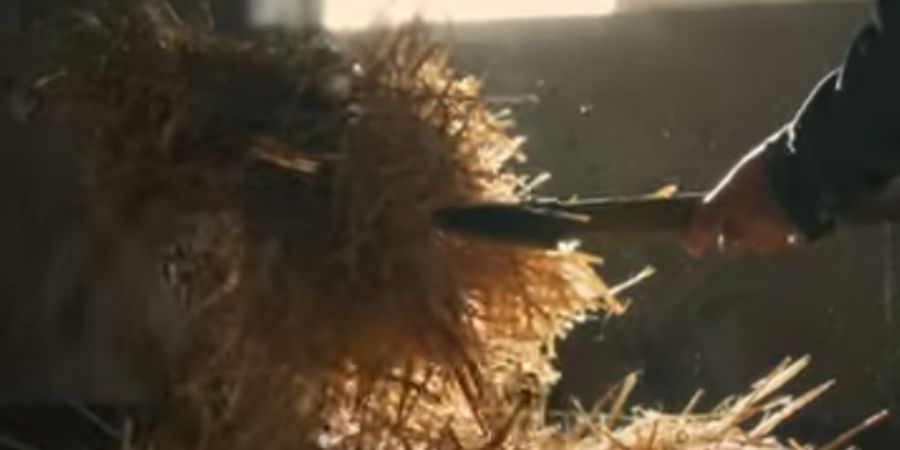
This allows for easier movement of the straw without it getting caught between the tines. The tines on a straw pitchfork are also straighter than those on a hay pitchfork, which helps prevent the straw from getting tangled.
Overall, pitchforks are a versatile tool that can be used for a variety of gardening and landscaping tasks. Whether you need to move hay, straw, compost, or other materials, there is a pitchfork that is designed to meet your needs.
Potato Forks
Potato forks are a type of garden fork that is specifically designed for digging up potatoes. These forks are typically smaller and lighter than other garden forks, making them easier to maneuver in tight spaces.
Potato forks also have shorter tines that are spaced closer together than other forks, which helps to prevent damage to the potatoes during the harvesting process.
Standard Potato Forks
Standard potato forks are the most common type of potato fork. These forks typically have four tines that are spaced closely together. The tines are usually curved slightly, which helps to prevent damage to the potatoes during the harvesting process.
Standard potato forks are also designed to be lightweight and easy to handle, which makes them a popular choice for home gardeners.
Multi-Tine Potato Forks
Multi-tine potato forks are a newer type of potato fork that has gained popularity in recent years. These forks typically have more than four tines, which allows for faster and more efficient harvesting. Multi-tine potato forks are also designed to be more durable than standard potato forks, which makes them a good choice for commercial growers.
One of the benefits of using a multi-tine potato fork is that it can help to reduce the amount of damage to the potatoes during the harvesting process. With more tines, the fork is able to distribute the weight of the potatoes more evenly, which helps to prevent bruising and other types of damage.
Another benefit of using a multi-tine potato fork is that it can help to increase productivity. With more tines, the fork is able to harvest more potatoes in less time, which can be especially beneficial for commercial growers who need to harvest large quantities of potatoes quickly.
Overall, potato forks are an essential tool for any gardener who grows potatoes. Whether you choose a standard potato fork or a multi-tine potato fork, these tools can help to make the harvesting process faster, easier, and more efficient.
Broadforks
Broadforks, also known as garden forks, are essential tools for any gardener. They are used to loosen and aerate soil, which promotes healthy plant growth. Broadforks come in different types, each with unique features that make them suitable for specific gardening tasks. In this section, we will discuss two types of broadforks: U-bar broadforks and adjustable broadforks.
U-Bar Broadforks
U-bar broadforks are named after their U-shaped tines. They are sturdy and designed to penetrate hard soil without much effort. The tines are spaced apart, allowing for maximum soil penetration and aeration. U-bar broadforks are ideal for breaking up compacted soil, especially in areas with heavy clay soil.
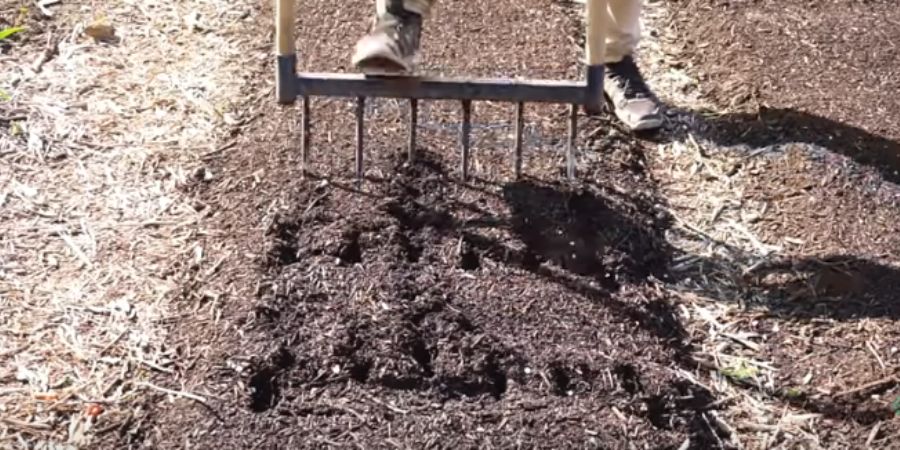
U-bar broadforks come in different sizes, and the number of tines varies depending on the model. Some models have four tines, while others have six or eight. The tines are usually made of high-quality steel, which makes them durable and resistant to rust.
One advantage of U-bar broad forks is that they are easy to use. The gardener needs to push the tines into the soil and then pull back on the handles to loosen the soil. U-bar broad forks are also suitable for use in raised garden beds, as they can be used to aerate the soil without damaging the bed’s structure.
Adjustable Broadforks
Adjustable broadforks are designed to provide more flexibility than U-bar broadforks. They have tines that can be adjusted to different widths, making them suitable for use in different soil types. Adjustable broadforks are ideal for gardeners who work in different soil types or who want a tool that can be adjusted to suit their specific needs.
Adjustable broadforks come in different sizes, and the number of tines varies depending on the model. Some models have four tines, while others have six or eight. The tines are usually made of high-quality steel, which makes them durable and resistant to rust.
One advantage of adjustable broadforks is that they are versatile. The gardener can adjust the tines to suit the soil type, making it easier to aerate the soil. Moreover, adjustable broadforks are also suitable for use in raised garden beds, as they can be used to aerate the soil without damaging the bed’s structure.
In conclusion, broadforks are essential tools for any gardener. They come in different types, each with unique features that make them suitable for specific gardening tasks. U-bar broad forks are ideal for breaking up compacted soil, especially in areas with heavy clay soil.
Adjustable broadforks, on the other hand, are versatile and can be adjusted to suit different soil types. Gardeners should choose the type of broad fork that best suits their needs and soil type.
Materials and Construction
When it comes to garden forks, the materials used in their construction can greatly affect their durability, weight, and overall performance. Here are some of the most common materials used in garden fork construction:
Steel Forks
Steel is a popular choice for garden forks due to its durability and strength. Steel forks are typically made from carbon steel, which is an alloy of iron and carbon. Carbon steel is known for its hardness and ability to hold a sharp edge, making it ideal for digging and breaking up soil.
One downside of steel forks is that they can be quite heavy, which can make them difficult to use for extended periods. Additionally, steel forks are prone to rusting, so it’s important to keep them dry and well-maintained.
Stainless Steel Forks
Stainless steel is a type of steel that contains chromium, which makes it resistant to rust and corrosion. Stainless steel forks are a great choice for gardeners who want a durable, low-maintenance option.
Stainless steel forks are typically lighter than carbon steel forks, making them easier to use for extended periods. They are also less likely to bend or break under heavy use.
Carbon Fiber Forks
Carbon fiber is a lightweight, strong material that is often used in high-performance applications such as race cars and airplanes. In recent years, carbon fiber has also become a popular choice for garden forks.
Carbon fiber forks are extremely lightweight, making them easy to use for extended periods. They are also very strong and durable, and are less likely to bend or break than steel forks.
One downside of carbon fiber forks is that they can be quite expensive compared to other materials. Additionally, they may not be as widely available as steel or stainless steel forks.
Overall, the choice of material for a garden fork will depend on the gardener’s needs and preferences. Steel forks are a durable and affordable option, while stainless steel forks offer low-maintenance and rust-resistant properties. Carbon fiber forks are a lightweight and strong choice but may be more expensive and harder to find.
Ergonomics and Design
When it comes to garden forks, ergonomics and design play a crucial role in ensuring that the tool is comfortable to use and efficient in its task. In this section, we will discuss the different handle types, tine shapes, and spacing that are available in garden forks.
Handle Types
The handle of a garden fork is an essential part of its design, as it determines how comfortable and easy it is to use. There are several types of handle materials available, including wood, plastic, and metal. Each has its advantages and disadvantages.
Wooden handles are popular among gardeners because they are comfortable to grip and provide a natural feel. They are also durable and can last for many years. However, they can be heavy and may require maintenance, such as oiling or sanding.
Plastic handles are lightweight and easy to clean, making them a popular choice for those who want a low-maintenance garden fork. However, they may not be as durable as wooden or metal handles and may not provide as much grip.
Metal handles are strong and durable, making them ideal for heavy-duty tasks. They also require minimal maintenance. However, they can be heavy and may provide less grip than wooden handles.
Tine Shape and Spacing
The tines of a garden fork are the prongs that penetrate the soil and lift it. The shape and spacing of the tines determine how effective the fork is at its task. There are several types of tine shapes and spacing available, including straight, curved, and diamond-shaped.
Straight tines are the most common type of tine and are ideal for general digging and lifting tasks. They are also easy to clean and maintain.
Curved tines are designed to penetrate the soil more easily and are ideal for working in hard or compacted soil. They are also effective at lifting heavy loads.
Diamond-shaped tines are designed to provide maximum penetration and are ideal for breaking up hard soil. They are also effective at lifting heavy loads.
The spacing between the tines is also an important factor to consider. Wider spacing is ideal for lifting larger loads, while narrow spacing is better for digging and penetrating the soil.
In conclusion, the design and ergonomics of a garden fork are important factors to consider when choosing the right tool for the job. The handle material and tine shape and spacing can greatly affect how comfortable and efficient the fork is to use. By understanding these factors, gardeners can choose the right garden fork for their needs and ensure a successful gardening experience.
Maintenance and Care
Garden forks are a long-term investment and can last for years if properly maintained and cared for. Here are some tips to keep your garden fork in tip-top shape:
Cleaning
After each use, it is important to clean your garden fork thoroughly. Dirt and debris can accumulate on the tines and handle, which can lead to rust and corrosion over time. To clean your garden fork, use a stiff brush or scraper to remove any dirt or debris from the tines. You can also use a garden hose to rinse off any remaining dirt.
Sharpening
Over time, the tines of your garden fork can become dull and less effective. To sharpen your garden fork, use a metal file to sharpen the edges of the tines. Be sure to file in one direction only to avoid damaging the metal. You can also use a sharpening stone or a rotary tool with a sharpening attachment to sharpen the tines.
Storage
When not in use, it is important to store your garden fork properly to prevent damage and rust. Store your garden fork in a dry, cool place, such as a shed or garage. If storing your garden fork outside, cover it with a tarp or other protective covering to prevent exposure to the elements.
Lubrication
To prevent rust and corrosion, it is important to lubricate the tines and handle of your garden fork periodically. Use a light coat of oil or lubricant on the tines and handle to keep them in good condition. Be sure to wipe off any excess oil to prevent buildup.
Replacement
If your garden fork becomes damaged or worn beyond repair, it may be time to replace it. Look for high-quality garden forks made from durable materials, such as stainless steel or carbon steel. Consider the size and weight of the garden fork, as well as the shape and length of the tines, to find the best fit for your needs.
By following these maintenance and care tips, you can keep your garden fork in excellent condition for years to come.
Choosing the Right Garden Fork
When it comes to choosing the right garden fork, it’s important to consider the type of gardening you’ll be doing and the tasks you’ll be performing. Here are some factors to keep in mind:
Size and Weight
The size and weight of the garden fork are important factors to consider, as they can affect the comfort and ease of use. A larger, heavier fork may be more difficult to handle, especially for those with smaller hands or less upper body strength. On the other hand, a smaller fork may be less effective for larger tasks such as breaking up tough soil or digging deep holes.
Tine Shape and Number
The shape and number of tines on a garden fork can also impact its performance. Straight tines are better suited for digging, while curved tines are better for lifting and turning soil. Additionally, the number of tines can affect how much soil is moved with each scoop. Forks with fewer tines may be more efficient for larger tasks, while those with more tines may be better suited for smaller, more delicate tasks.
Handle Material
The material of the handle can also impact the comfort and durability of the garden fork. Wooden handles are a popular choice due to their natural feel and durability, but they may be prone to splintering or cracking over time. Plastic handles are often more lightweight and resistant to damage but may provide a different level of grip than a wooden handle.
Additional Features
Some garden forks may come with additional features such as ergonomic handles, cushioned grips, or adjustable tines. These features can enhance the comfort and ease of use of the fork but may also come with a higher price tag. It’s important to weigh the benefits of these features against the cost to determine if they are worth the investment.
Overall, choosing the right garden fork is a matter of considering your specific gardening needs and finding a fork that is comfortable, durable, and efficient for the tasks at hand. By taking the time to research and compare options, you can find a garden fork that will be a valuable tool in your gardening arsenal for years to come.
Innovations in Garden Fork Design
In recent years, there have been several innovations in garden fork design that have improved their functionality and made gardening tasks easier. Some of the most notable innovations in garden fork design are discussed below.
Ergonomic Handles
One of the most significant innovations in garden fork design is the introduction of ergonomic handles. These handles have been designed to reduce the strain on the user’s hands and wrists, making it easier to use the fork for extended periods. Ergonomic handles are usually made of rubber or plastic and are contoured to fit the shape of the user’s hand.
Interchangeable tines
Another innovation in garden fork design is the introduction of interchangeable tines. This feature allows the user to swap out the tines on their fork depending on the task at hand. For example, if the user needs to loosen soil, they can use a fork with wider tines, while a fork with narrower tines is better suited for aerating soil.
Lightweight Materials
Garden forks have traditionally been made of heavy materials such as steel or iron. However, recent innovations in materials science have made it possible to produce much lighter garden forks without sacrificing strength or durability. Lightweight materials such as aluminum and fiberglass are now commonly used in garden fork construction.
Telescoping Handles
Telescoping handles are another innovation in garden fork design that has made gardening tasks easier. These handles can be extended or shortened depending on the user’s height, making it easier to use the fork without having to bend over. Telescoping handles are usually made of lightweight materials such as aluminum or fiberglass.
Angled Tines
Angled tines are another innovation in garden fork design that has improved their functionality. These tines are angled slightly backward, which makes it easier to penetrate the soil and reduces the amount of effort required to use the fork. Angled tines are especially useful for breaking up hard or compacted soil.
In conclusion, there have been several significant innovations in garden fork design in recent years. These innovations have improved the functionality of garden forks and made gardening tasks easier. From ergonomic handles to interchangeable tines, these innovations have made it easier for gardeners to maintain their gardens and enjoy their time outdoors.
Read also:

